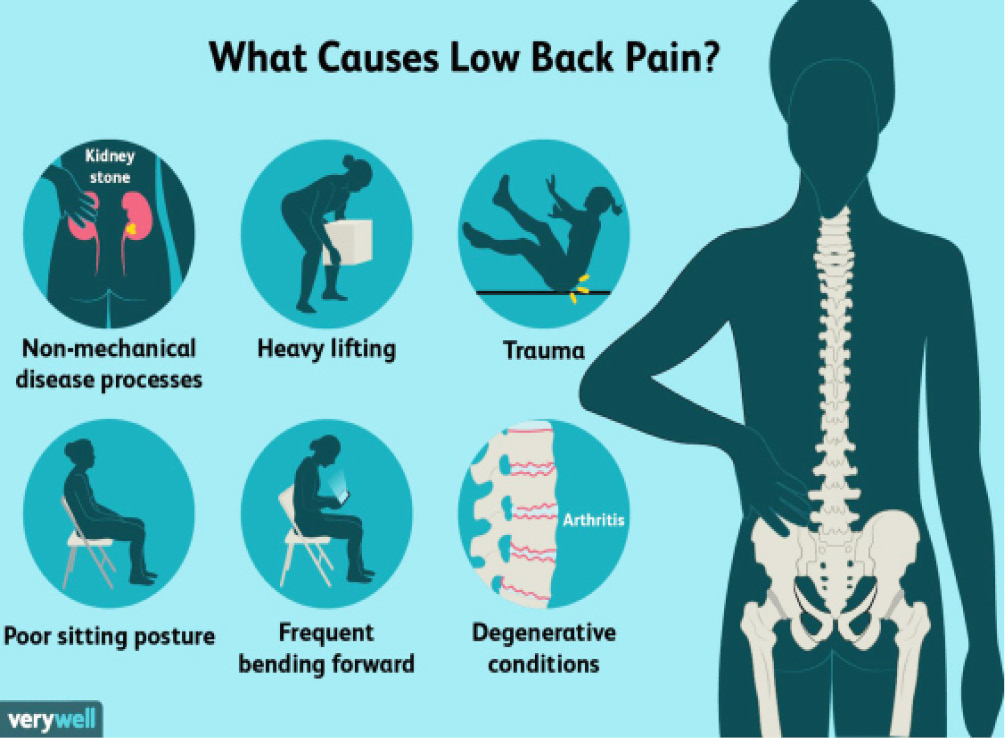3 daily things that hurt your spine – and how to avoid them
Back pain is everywhere. Physiotherapists estimate nearly eight in every 10 people around you lives with one form of back pain or another. So that back pain or stiffness in your lower back isn’t peculiar to you. But there are daily routines you are keeping, and things you can do to break them. Sitting too […]

Back pain is everywhere. Physiotherapists estimate nearly eight in every 10 people around you lives with one form of back pain or another. So that back pain or stiffness in your lower back isn’t peculiar to you. But there are daily routines you are keeping, and things you can do to break them.
Sitting too long. Check majority of Nigerians working in an office or consider any type of work, you will quickly notice that we spend quite a significant amount of time sitting down as many as 80% of us sit seven to 10 hours every day. Approximately in 2 years, we have sat in one position for up to a year. Most times we are not only sitting but our ease to get into slouched and slump positions quite often to either work on the computer or on our smartphone this behavior, might affect us in several ways by the pulling stress on the muscles and disc of the back and neck as you remain seated. There is likelihood to cause the spinal ligament to stretch beyond its limits and cause your disc to push out of its position.
A day of sitting is usually not harmful but a continuous act of sitting on a regular basis can cause these problems in the future.
While you may feel comfortable in your chair as you sit in your preferred position, it’s important to vary these positions, varying this position involves standing up and moving around a few minutes to allow the already built tension to ease off stand up from sitting every 45mins.
Remember, sitting is worse than smoking; prolonged sitting is a disease, sitting kills.
Fixating on your smartphone. A young person in commute, slumped posture, gaze fixed on a handheld. Sounds familiar? That’s bad for the spine, and that fixation is gradually destroying our posture. The average human head will weigh about 5kg when seated upright spine, but with our habit of everyday bending to read news, watch videos and chat, every 15-degree forward bend leads to extra 13kg increase on the amount of work your neck muscles, joints, ligaments and bones will do. So therefore, with a complete slump as seen in many people the neck is usually pushed to about 35 degrees as its seen with folks reading this article now. The responsibility shifts to the muscle to perform the work of holding your extra 26kg head because it has shifted beyond the natural position where the neck bones are supposed to work and this will lead to tensions and aches that might jeopardize your spine.
Don’t look down on your smart phone, instead bring the phone up to eye level, this maneuver will always help ensure the head is balanced on top of the spine and relieve the muscles in your back, neck and shoulders.
Sleeping on your stomach. This is a common mistake. Sleeping on the stomach can cause back strain and put uncontrollable pressure on the spinal disc and unfortunately for many, they can’t sleep unless they are face down.
Many go, “It’s my favorite position”. No wonder people suffer bouts of back strain from time to time. Though to many this position might be the only comfortable they can find at night to sleep but the reality is there is usually an undue amount of pressure on the spine, and ultimately causing the spine’s natural curve to flatten such can wreak havoc for you and send you into relying on painkillers or even do a surgery if your back pain becomes so severe.
There are a lot of awesome sleeping positions that can spare your back, neck and we usually recommend you sleeping on your side and sleeping face up.
This may sound difficult because, we get people saying that even though they sleep face up, they wake face down.
Do this instead, when sleeping on your side, use pillow to support yourself between your knees. Whether you are using one pillow or not always resist the urge to always sleep on the same side. Sleeping on the side won’t be that comfortable unless you use pillows to support your hip, pelvis and spine in a better alignment.
You can also sleep face up with pillows underneath your knee. When you sleep on your back, your weight is evenly distributed and spread across the widest area to reduce tension on the spine. Should you insist on sleeping on your stomach, make sure you place pillows under your pelvis and lower abdomen to help relieve pressure off your back.
Courtesy: Dr Eze Nnamdi Charles, DPT, MSc
